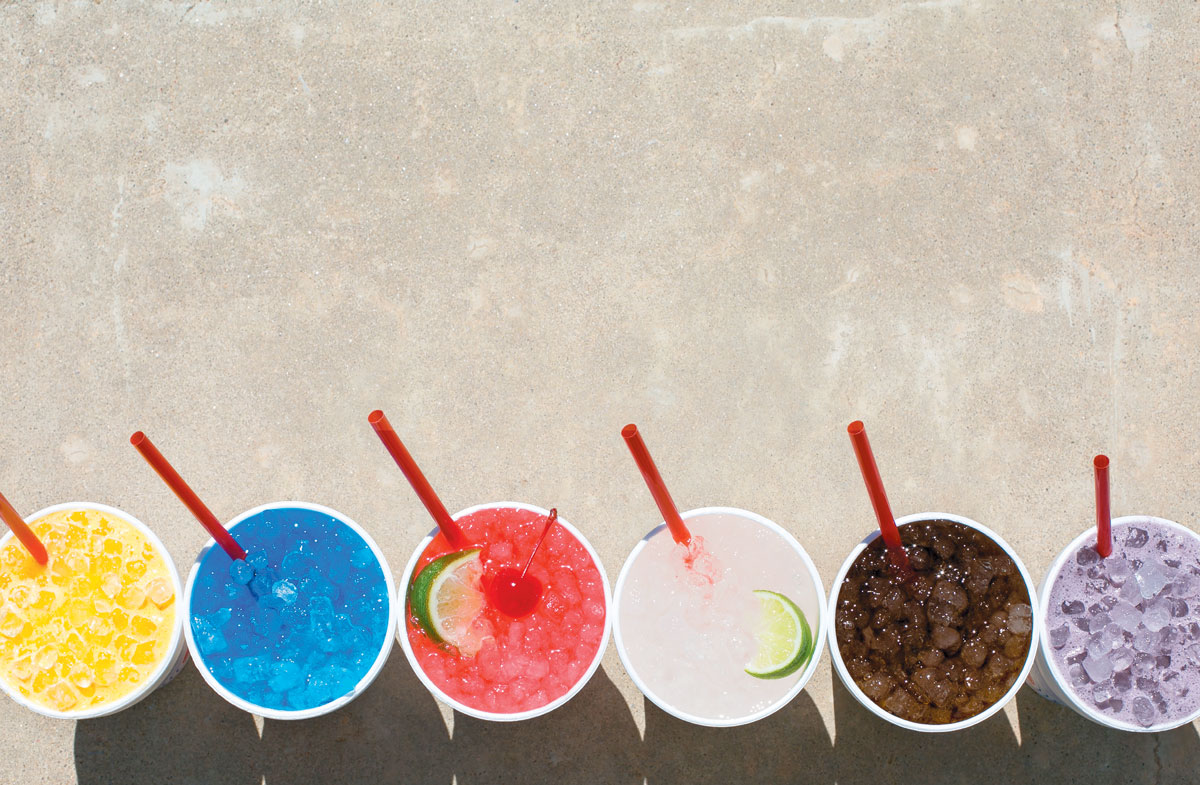Sonic Ice
We owe it to a quirk of chemistry that ice floats. (When water freezes, the water molecules form a crystalline structure maintained by hydrogen bonding, which makes ice less dense than liquid water.) If it did not, cold drinks would be pretty boring: a lump of ice at the bottom of the cup and luke-warm liquid on top.
Fortunately for us, ice does float, and there is no more wonderful example than Sonic’s famous ice.
For recent transplants or visitors from out of town, Sonic is headquartered in Oklahoma City, and serves classic drive-in food via carhops. Sonic ice is a big deal. There is a Facebook group devoted to Sonic ice, and Sonic ice is a popular topic on the blog icechewing.com. In Oklahoma City in the summertime, a big Sonic cup full of ice is a popular accessory.
Here is a story to illustrate the popularity of Sonic ice. PGA pro golfer Brandt Snedeker won the FedEx Cup in 2012. The FedEx Cup is the PGA Tour’s season-ending playoff series, and the winner gets a ten million dollar bonus. What was Brandt’s big splurge? A Sonic ice machine. Brandt said: “The thing I bought myself is a Sonic ice machine, it makes those little ice pellets, you know. I love that Sonic ice so much...”
Brandt Snedeker is not the only celebrity aficionado of Sonic ice. Oklahoma natives Vince Gill and Kristin Chenoweth are also reportedly huge fans.
I sat down to chill for a bit with Cliff Hudson, the long-time CEO of Sonic, and to talk about his company’s famous ice. Cliff told me that, unlike many restaurants, at Sonic, drinks are not an afterthought. Instead, drinks are a critical part of the Sonic experience, and account for around a third of sales.
Drinks have always been a big part of Sonic’s business and are in the company’s DNA. Sonic started in Shawnee, Oklahoma, in 1953, but it was not always called Sonic. Cliff told me Sonic’s founder, Troy Smith, started the business as Top Hat, a rootbeer stand. Some timely advice from his lawyer convinced him to change the name because another company was already using that name. Top Hat’s motto was “Service at the Speed of Sound” which inspired the change to Sonic in 1959.
Sonic ice is not a cube, but is a form of ice, which, in the restaurant business, is referred to as “nugget” or “pellet” ice.
Sonic ice is likely so popular because of some of the properties of pellet ice. Pellet ice has much more air and has a much greater surface area than a typical ice cube. This matters because the air pockets in pellet ice act as insulation, which allows the ice to melt more slowly. It turns out the air pockets have other benefits. They make the ice much easier to chew, and also allow some of the drink to work its way into the ice nugget. Each piece of Sonic ice is a reminder of the delicious beverage it cooled.
Like many restaurants, Sonic uses a franchise business model (approximately 90% of Sonic locations are franchised). One of Sonic’s requirements is that all franchises use the same type of ice machines: specifically, a Scotsman or Hoshizaki machine that makes nugget ice. Sonic ice is popular enough that many locations sell it by the bag.
The American commercial ice trade was started by New England businessman Frederic Tudor in the early 1800s. Tudor started by shipping large blocks (300 pounds) of ice cut from frozen northeast ponds to the Caribbean and cities in the southern U.S. with hotter climates. The first commercial ice-making machines were invented in the 1850s, and refined until the 1930s, when machines capable of making edible ice were invented. Until 1981, ice was almost always made in cubes. However, in 1981, the Scotsman Company invented a process to make nugget ice.
Pellet ice is made by passing water through a cold metal cylinder. The water freezes on the cylinder, forming a thin sheet, which is scraped off by an auger. This process results in flake ice. The flake ice is then forced through a small tube, which compacts the flakes. As the ice exits the tube, it either breaks off or is cut into small nuggets or pellets.
Sonic uses foam cups for its drinks, which, when combined with the long-lasting properties of the nugget ice, make for a cold drink you can keep for hours. Cliff told me his favorite drinks are Diet Dr Pepper or iced tea with a shot of cranberry.
True to its heritage, Sonic still sells root beer. While root beer may be the original Sonic drink, Sonic also launched a line of cream sodas this Spring. The line of cream sodas is called Soda Pop Shoppe. One example is the Cherry Old Fashioned Sweet Cream Soda. It is made with cherry flavor and Sonic’s sweet cream, and comes with a swizzle stick.
If I had to pick one drink, I would stick with the root beer, and would look forward to a cup of root-beer-flavored ice to crunch for a good long while.





